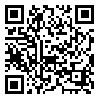BibTeX | RIS | EndNote | Medlars | ProCite | Reference Manager | RefWorks
Send citation to:
URL: http://sjh.umsha.ac.ir/article-1-569-en.html
Lumbar puncture (LP) is the only way to diagnose meningitis, however some concerning points regarding its complication especially brain herniation are usually noted. Several factors including difficulties of neurologic examination especially in infants, absence of cooperation when performing the LP, incorrect
myths and legal issues as well as unavailability of CT equipment , X-ray exposure and charges; makes evaluation of such requests reasonable .
One hundred infants and children, 2 months to 12 years old who were suspicious to have meningitis were enrolled in this cross-sectional, descriptive study. Two groups were formed based on requesting a B.CT (Brain CT scan) before LP or performing the procedure directly. Demographic and clinical parameters were analyzed among two groups using a questionnaire and CT results were recorded. Chi-square test was used for statistical analysis; P value<0.05 was considered as significant.
B.CT was requested for 21 patients (case group) in which the results led to postponing the procedure in 14%( 3) of cases. Toxic appearance, poor general condition, bulging fontanel and impaired consciousness (GCS score<8) were significantly related to such a decision making. There was also a trend toward ordering B.CT for those patients with recent cardiopulmonary arrest, focal signs, papilledema, hemiparesis and bradycardia. Two cases of brain herniation were identified in the control group, both had severe irritability and projectile vomiting at presentation.
According to other studies, severe impairment of consciousness and presence of focal signs and symptoms are acceptable criteria for such a request, however ordering B.CT solely based on general condition or presence of a bulge fontanel seems to be unreasonable for which we couldn’t identify any supportive study. Larger scale studies considering the pediatric differential diagnosis and characteristics are required to generate proper, scientific and supportive protocols in this regard.
| Rights and permissions | |
 |
This work is licensed under a Creative Commons Attribution-NonCommercial 4.0 International License. |





